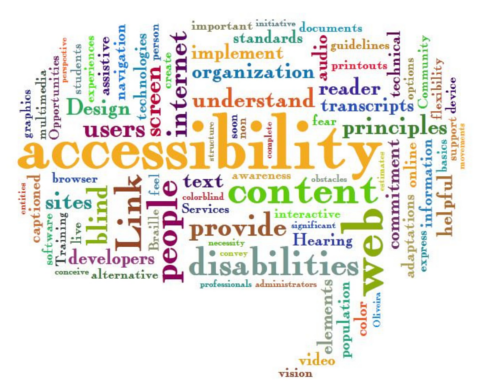
Whether it’s action against Australian retailer Coles for its online shopping site or Westpac for its banking app, or action against online grocer Peapod and Tax preparer H&R Block in the US, it’s becoming clear that having an inaccessible website is a risky thing.
In the same way that a culture of occupational health and safety (OH&S) is managed from the CEO level and trickles down to become everyone’s responsibility, minimising the risk of a discrimination complaint over the accessibility of a website or online service is everyone’s responsibility.
“With increased complaints and legal action for organisations of inaccessible websites and apps, now is the time for all web and app Project Managers, Developers, UX/Designers, Content Producers, Business Analysts and Testers to be ‘baking in’ accessibility into processes and work practices,” Media Access Australia Deputy CEO Natalie Collins said ahead of her presentation on web accessibility at the AWIA-sponsored Port80 event in Sydney.
“Accessibility is everyone’s responsibility and it is not difficult to get started or find resources that will help you and your team produce a website, app or digital presence that works for everyone.
“Importantly, as Tesco in the UK has proved, web accessibility is a competitive edge, so if you’re not thinking about and building in accessibility with client work, then you’re competitors definitely are.”
Collins said that a good place for digital agencies and other web industry businesses to begin ensuring that their clients’ websites were accessible was through taking a role-based approach to web accessibility.
“You can see the role-based approach in something as simple as an image on a website—which needs an alternate text description to be accessible for people using a screen reader,” she said.
“There is a role for the web developer in ensuring the content management system prompts for alternate text, and there is a role for the web designer in ensuring that any branding or company logos and decorative images also have appropriate alternate text attributes. For the content author there is a role to play in ensuring that any images posted with website content have meaningful alternate text.”
During her presentation Collins will discuss the role-based approach in more depth and also provide a number of practical examples of website accessibility.
Additional guidance on web accessibility is available through Media Access Australia’s complete guides to web accessibility for content authors, web developers and web designers. Professional development on web accessibility can also be obtained through the Professional Certificate in Web Accessibility, a university-accredited online qualification jointly conducted by W3C member Media Access Australia and the University of South Australia.
Media Access Australia also offers a no-cost Digital Accessibility Maturity Assessment (DAMA) to gauge how far advanced an organisation is in addressing the legal and policy requirement to make digital media—websites, documents, applications, video and other content—accessible to the broadest possible audience, including people with disabilities, ageing members of the community, those from non-English-speaking backgrounds and those with varying levels of education. The report aids organisations in their efforts to embed accessibility principles into daily work practices to maximise consumer engagement and satisfaction, cost savings and efficiency gains.
Update: Slides from the 'Web accessibility: it’s everyone’s responsibility' presentation at Port80 Sydney are now available to download via SlideShare.
Top of page

